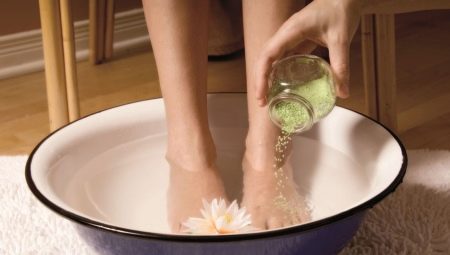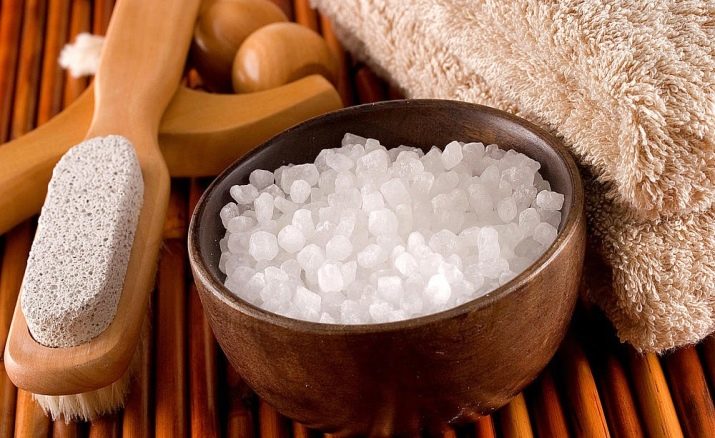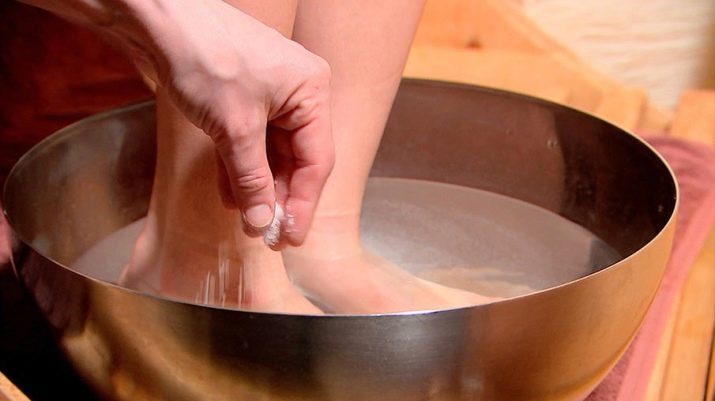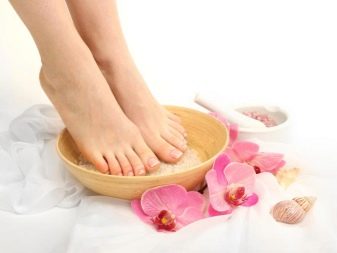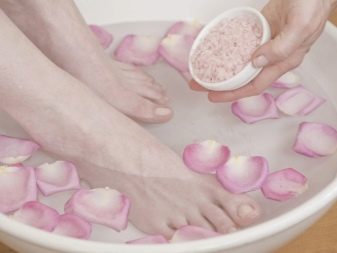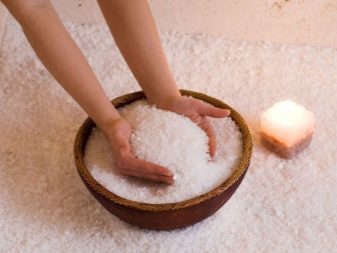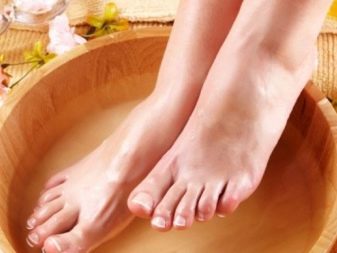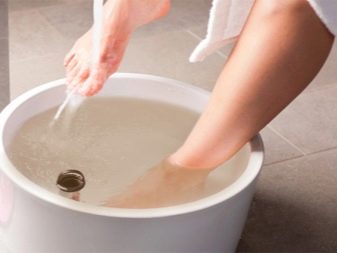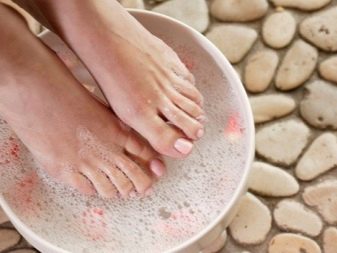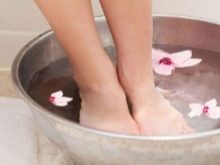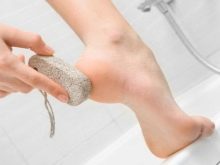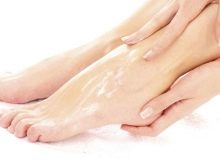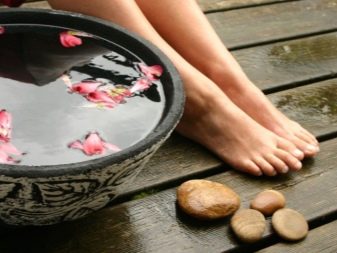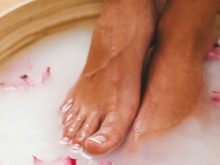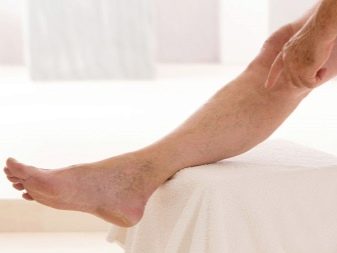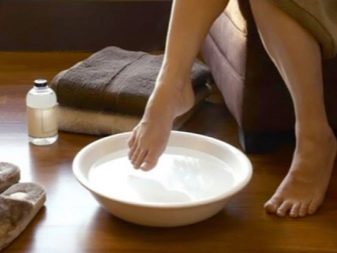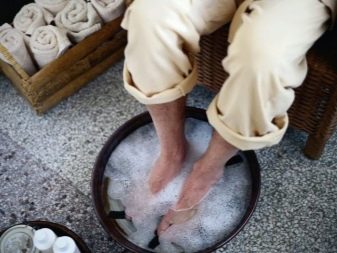Baths with sea salt since ancient times were considered a therapeutic and tonic against tired feet. Sea salt in abundance contains many beneficial trace elements and minerals. Salt is used not only for cosmetic purposes, but also helps to cure many diseases.
Application
Most people spend their working day in one position - sitting or standing. Often, people do not have the opportunity to change their original position, which is why our body becomes numb and tired. There is a tremendous impact on the legs, so by the evening they swell up and swelling appears. Foot bath with sea salt will be a real salvation for any person. They are easy to prepare and do not require large material costs.
But their benefits are enormous: salt relieves tension in the muscles, exfoliates coarse skin on the heels, has a disinfecting and therapeutic effect on the entire human body.
Indications for use of sea salt baths are quite extensive. This procedure can be done both in the salon and at home. In the field of cosmetology, salt is used to preserve beauty and general immunity. It is known that it favorably affects nails and hair, strengthens them.
Among the useful properties of this product can be highlighted:
- analgesic effect (salt has anti-inflammatory effect and perfectly relieves small symptoms of cold and pain);
- tonic and restorative effects on the immune system (in particular, salt is a prophylactic agent for diseases of the respiratory system, and if the procedure is carried out in two or three days, it is possible to increase the body’s resistance to various kinds of colds);
- It is useful to make baths for those who suffer from excessive sweating, as baths help reduce sweating and eliminate unpleasant smell unpleasant smell);
- beneficial and soothing effects on the nervous system (salt baths relax the body, relieve fatigue and help with stress);
- It is known that salt baths have a positive effect on the heart and have a therapeutic effect in cardiovascular diseases, improve blood circulation;
- with fungal diseases, spurs on the legs, arthritis and arthrosis, baths with salt will be very useful, but the procedure should be carried out regularly, at least twice a week (minerals that contain salt will help get rid of corns, soften rough skin on the feet);
- this procedure reduces tension and muscle pain, relieves swelling in the legs, and the severity disappears after only a couple of minutes (baths will especially be indispensable for women who wear high-heeled shoes);
- due to the large number of minerals contained in sea salt (potassium, magnesium, calcium and sodium), the nails no longer exfoliate and break, become stronger and healthier.
How to make baths?
The rules for making footbaths are very simple. First you need to prepare your feet for the procedure and wash them in warm water. You should choose the optimum temperature for yourself. During the procedure, the water in the bath may cool, so boiling water is allowed.Sea salt should be dissolved in the proportion of one and a half tablespoons per basin of water. You can not wait for the salt to dissolve completely, but immediately release your feet into a basin of water. Salt crystals, which have not yet had time to dissolve, will provide an additional point (acupuncture) massage.
A quarter of an hour is the optimal time for this procedure, it should not be exceeded.
After fifteen minutes, you can perform additional cleaning and polishing your feet with pumice. Since the skin after the bath has become steamed and supple, then to remove the coarsened skin and dead cells is not difficult. After the procedure, wash your feet in clean, warm water and wipe them dry with a soft towel. Do not wipe your feet too aggressively so as not to damage the delicate skin. It is best to just wrap your feet with a towel and let excess moisture soak into the fabric. Next, you should spread the legs with a softening or moisturizing cream. The cream will fix the result, soften the skin and keep moisture in the skin. To achieve the desired result, baths can be made several times a week.
Basic recipes
Various essential oils will help to diversify the bath with sea salt.
With the help of fragrant oils, the procedure can be made not only useful, but also enjoyable.
- To relieve fatigue fit bath with salt and rose oil or lavender. Lavender has anti-inflammatory and analgesic effects. A couple of drops of lavender oil should be mixed with two tablespoons of sea salt and pour hot water.
- Eucalyptus oil calms tired for the day legs. Mix eucalyptus in equal proportions with lavender and lemon oil, add the mixture in salt and cover with water. Dip your feet in the bath for 10-15 minutes.
- To raise the tone of the body and mood in general, experts recommend using orange or mint oil. Orange is famous for relieving insomnia and uplifting. Mint has a positive effect on the nervous system and relieves anxiety.
- Jasmine or eucalyptus oil is excellent for relieving leg pain and swelling.
- Juniper oil is responsible for the restoration of the skin and cell regeneration.
After the procedure, be sure to let the body rest and recover. It is best to lie down on the bed to eliminate the strain on tired legs.
Contraindications
Despite a lot of useful properties, foot baths still have a number of contraindications:
- It is not recommended to do such procedures for people who suffer from varicose veins, as the baths stimulate blood flow in the legs, and this creates an additional load on the veins;
- during pregnancy, foot baths are also not recommended, since hot water contributes to the expansion of blood vessels in the legs, which can lead to an undesirable contraction of the uterus;
- the presence of colds (flu, SARS, sore throat);
- diseases of the heart and blood vessels;
- diabetes;
- tuberculosis;
- hypertension;
- the presence on the skin of various wounds, cracks, burns (sea salt will start to eat away any wounds, which will lead to unbearable pain);
- during the exacerbation of any chronic disease, the procedure is categorically contraindicated.
For more information about the beneficial properties of foot bath with sea salt, see the video below.
